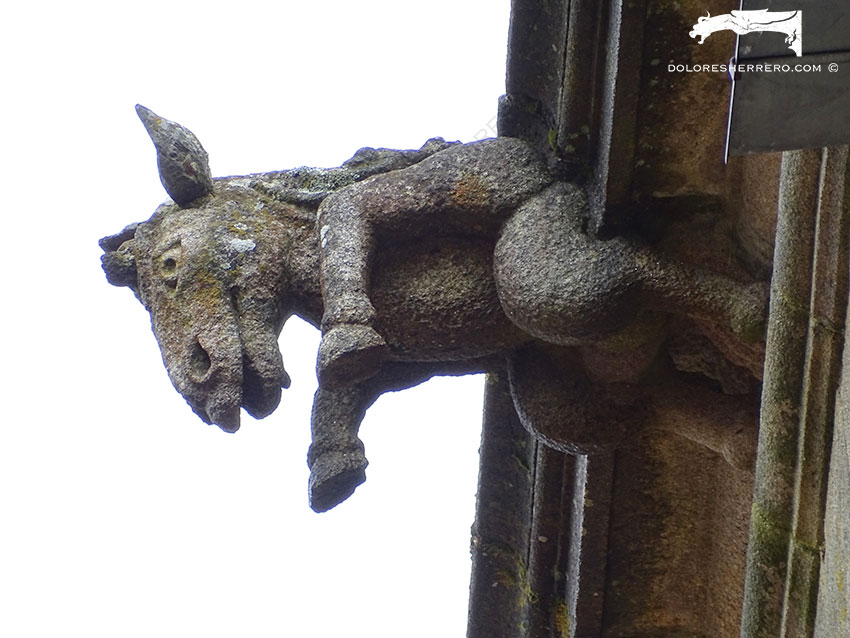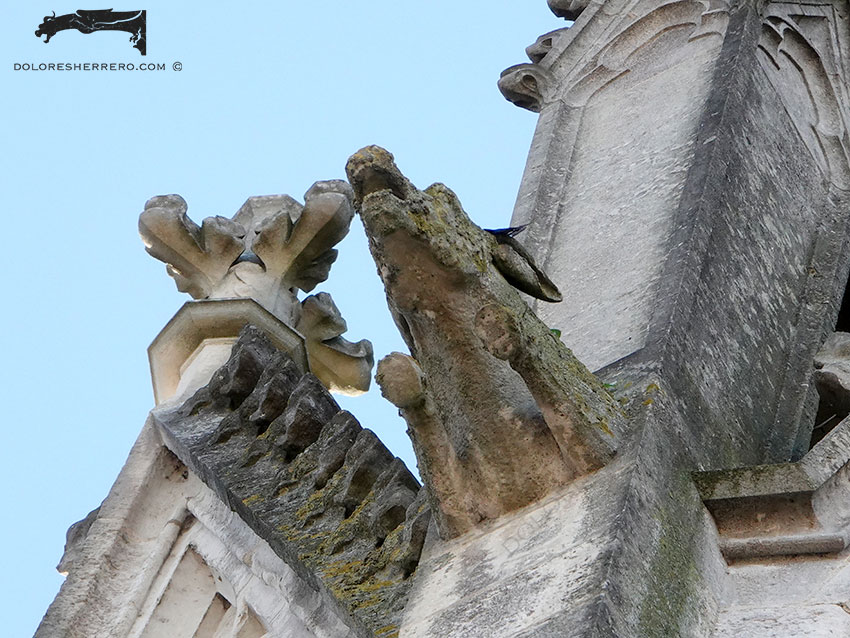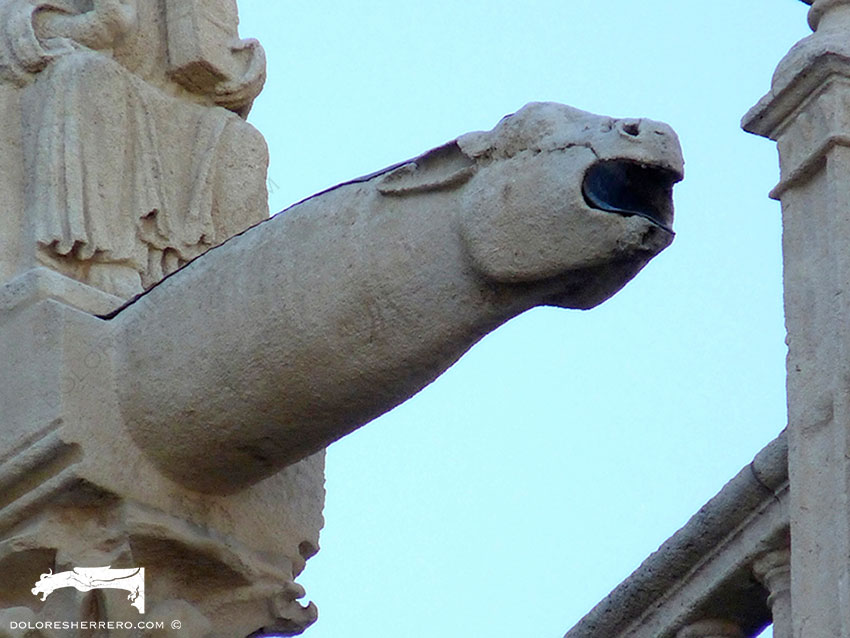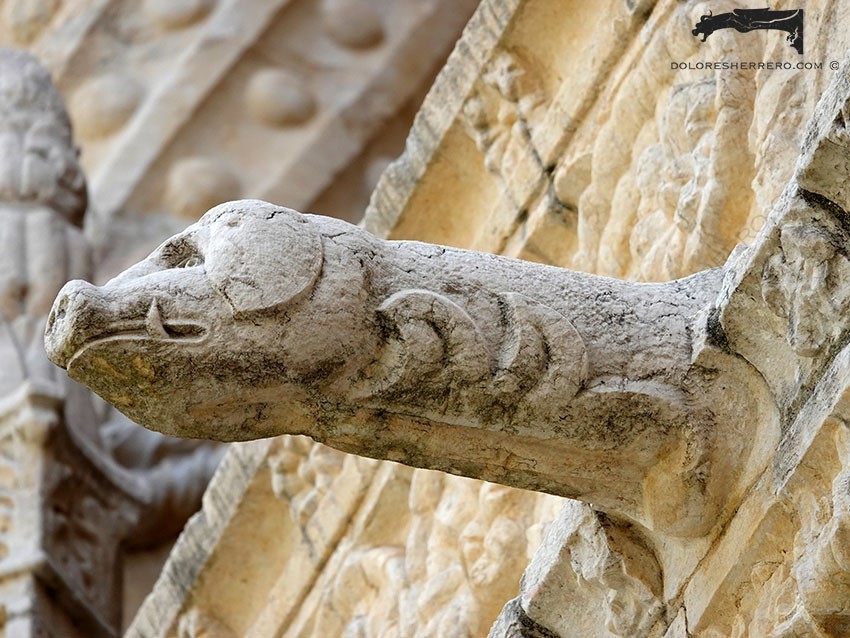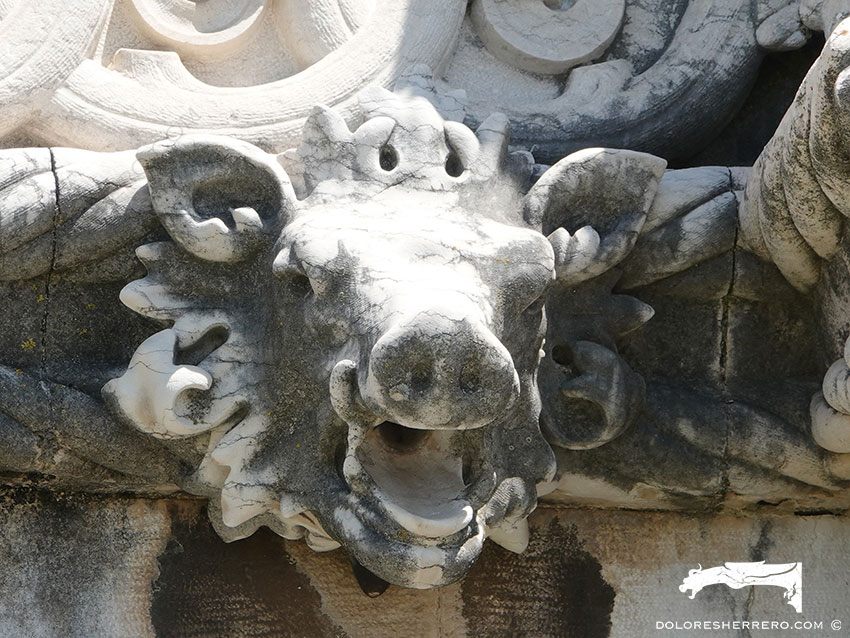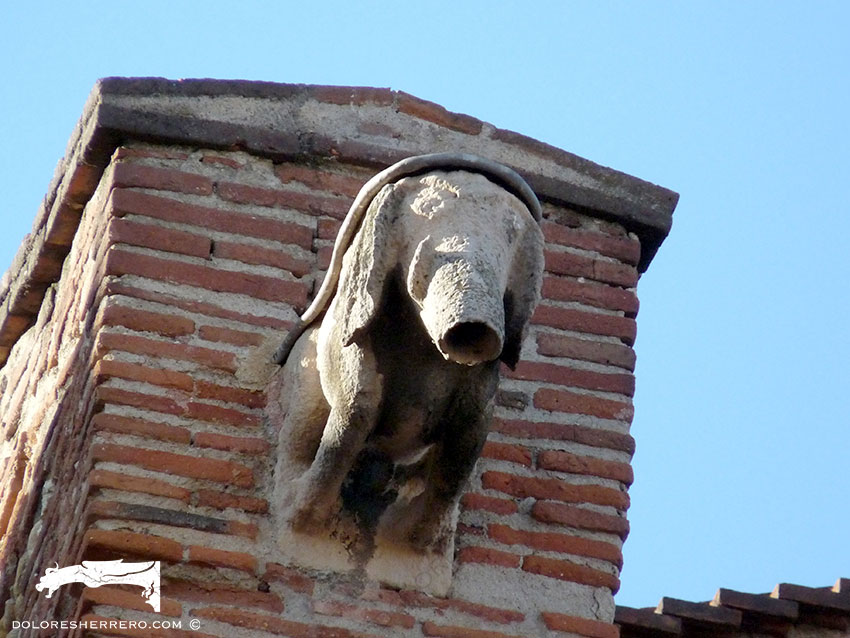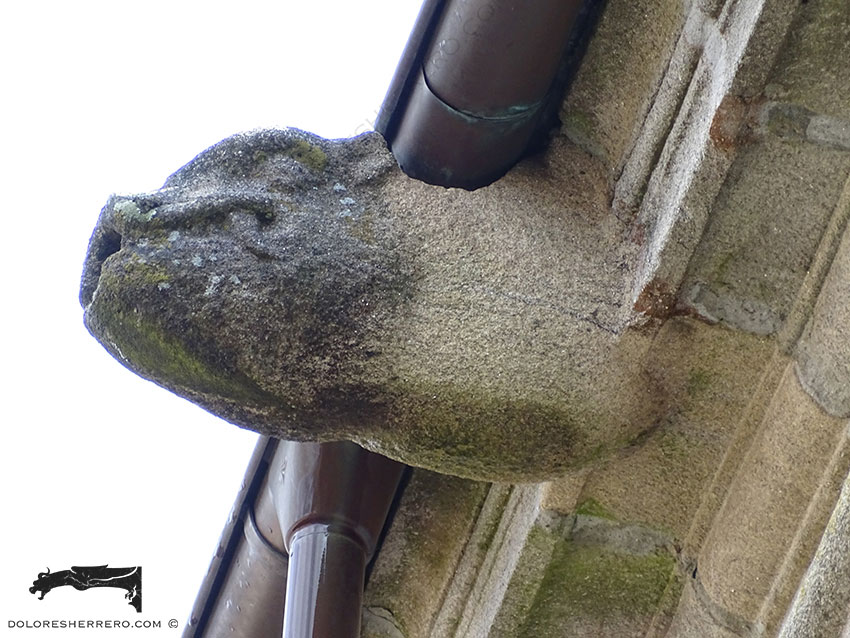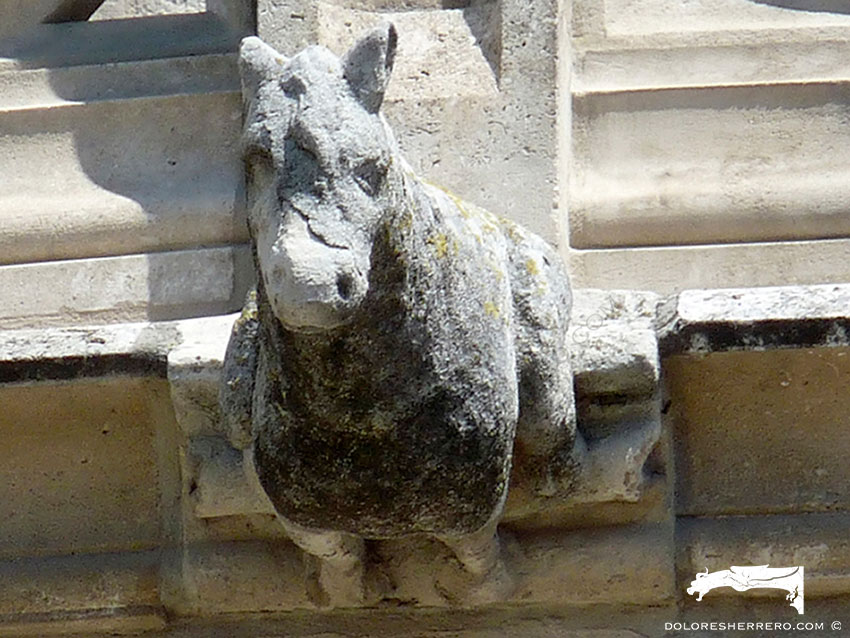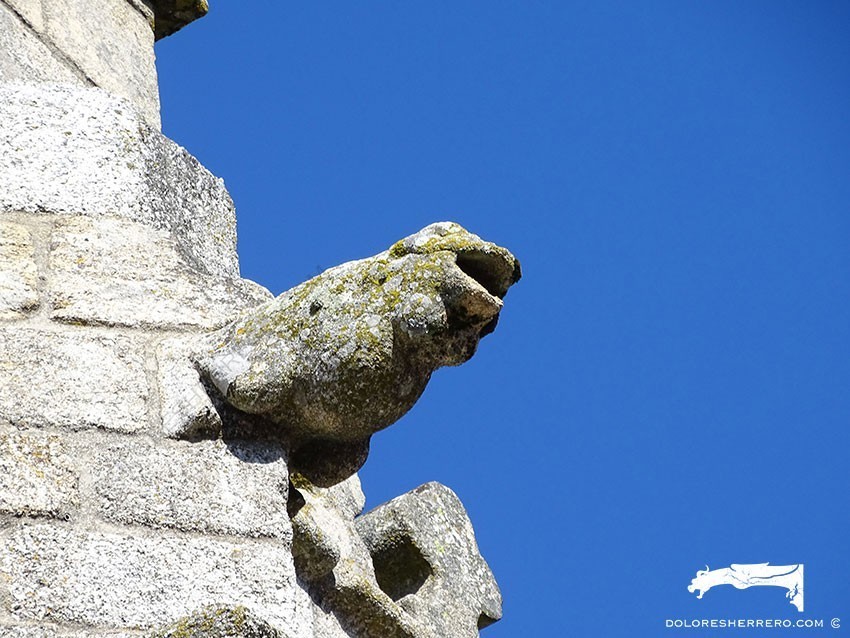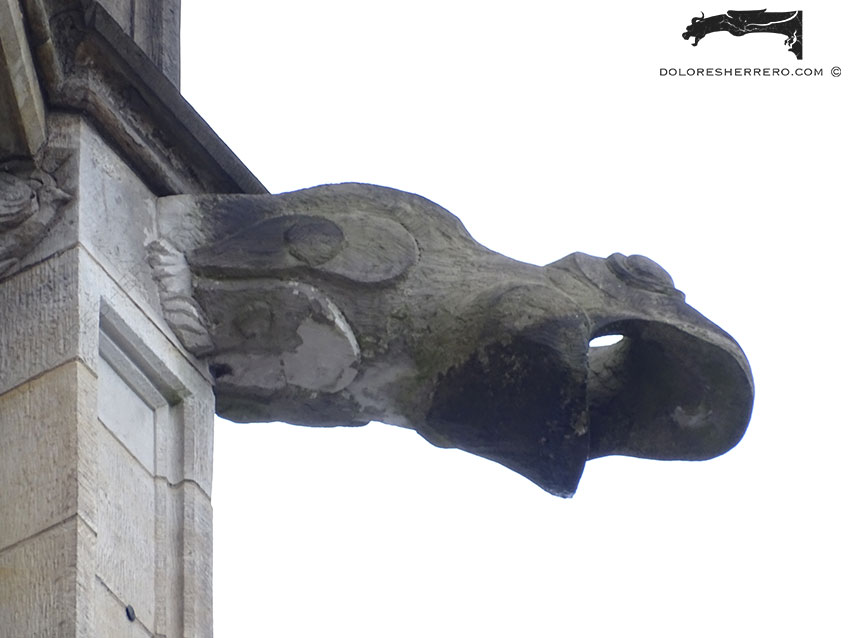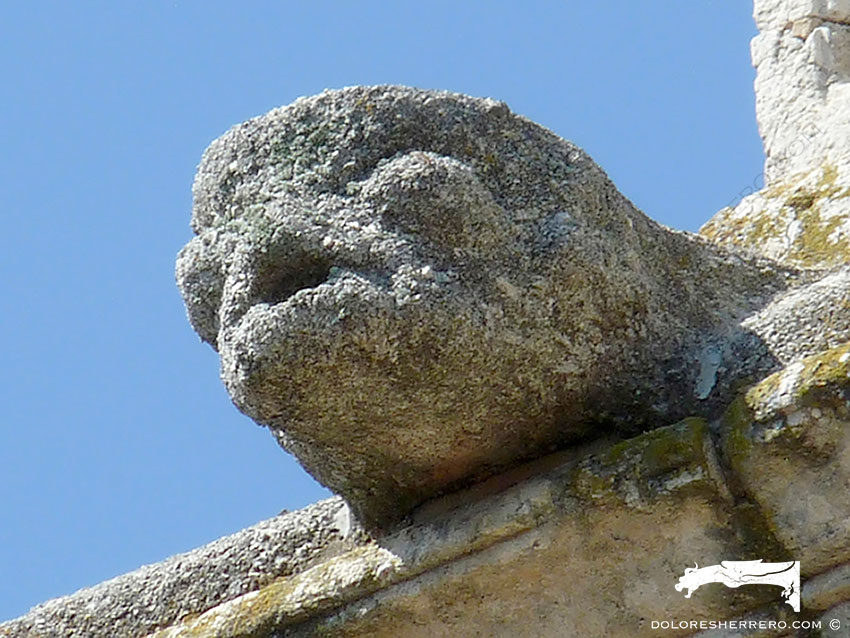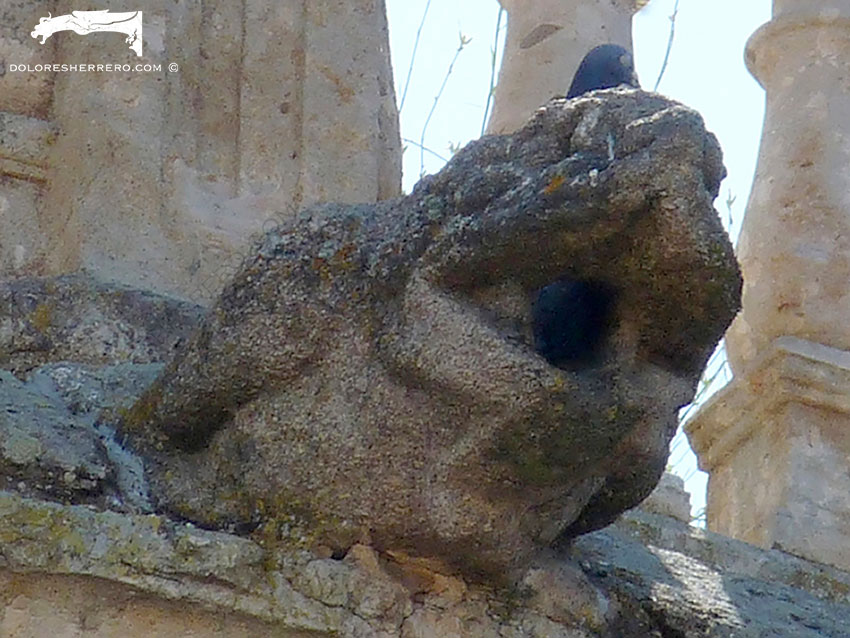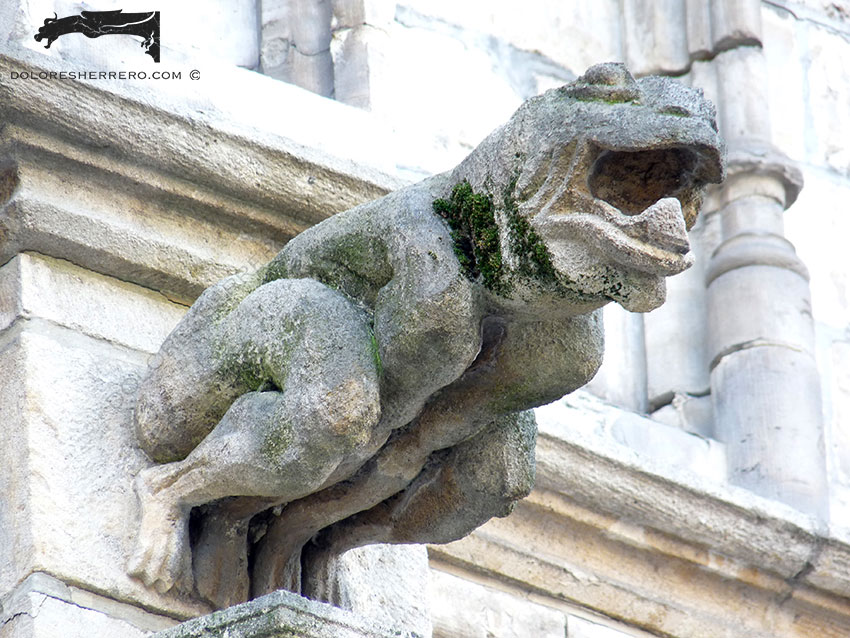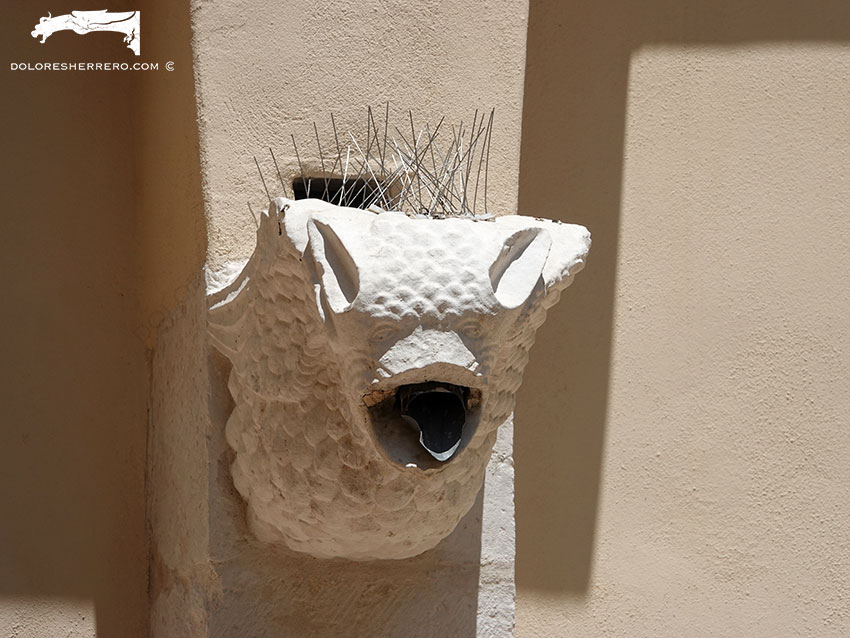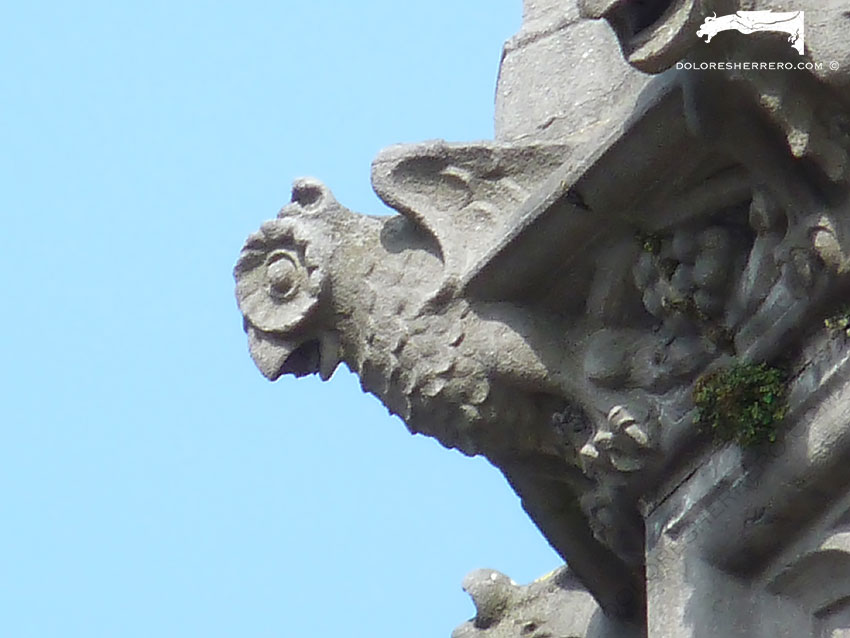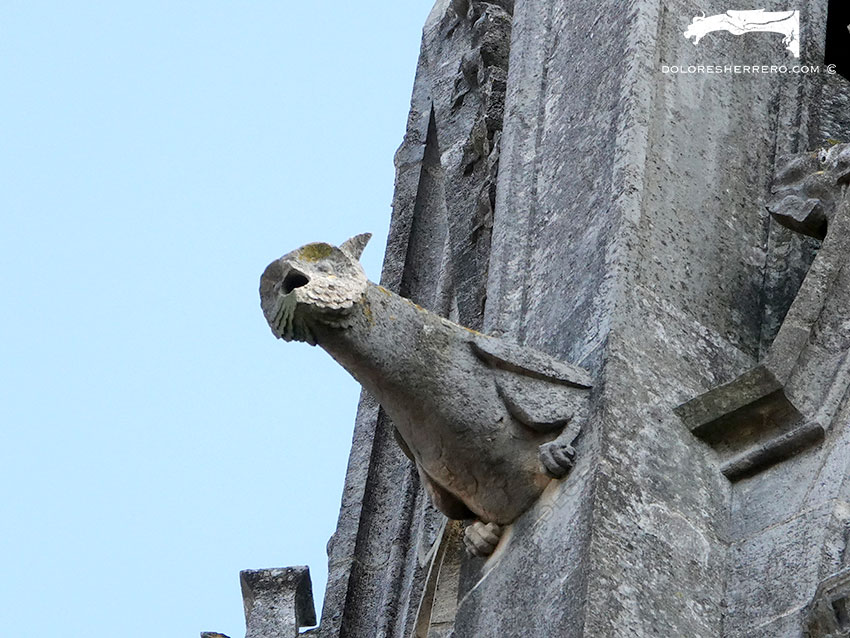In addition to the figures of the lion, the dog and the eagle – the most commonly depicted animals in gargoyles – you can sometimes find depictions of other real animals, making unusual and unique gargoyle images that attract and fascinate passers-by.
A Catalogue of Singular Animals in Gargoyles
We’ve already seen some of these peculiar animals when we talked about the gargoyles in Quito (Ecuador). Today we are inviting you to look at a few more examples of our fauna and discover some aspects of their symbolism.
Ass
The first gargoyle image that is surprising because it depicts an unexpected animal is that of an ass. As well as appearing in depictions of Christmas and Jesus’s entry into Jerusalem, the ass also features in some legends about saints. For example, the biography of Saint Jerome mentions an ass that carried wood for the monastery. The ass also has a negative meaning. It’s said that it has served Satan in the hands of artists and writers. The Christian Middle Ages made the ass the symbol of relative intelligence that will not be convinced by Truth. It’s also the emblem of obstinacy and ignorance and was used in Medieval imagery as the mount of the devil of laziness. The ass appears in other depictions too, such as in some of the choir stalls in Spanish cathedrals (Plasencia, Zamora, Ciudad Rodrigo).
- San Martín Pinario Monastery (Santiago de Compostela, Spain)
- Bayonne Cathedral (France)
- Burgos Cathedral (Spain)
Boar
The boar is also an unusual animal in gargoyle images. In Antiquity it symbolised a quick temper, irrepressible independence and brutal daring. For Celtic and later Gaul warriors it was a military emblem, and for the druids of Ireland and Gaul it was an image of intellectual and spiritual strength and supremacy. However, Christianity was very harsh with this animal, as it was mentioned as the “wild beast” of Revelations and the anti-Christ, and came to symbolise envy, brutality and (females) lust.
- Jerónimos Monastery (Lisbon, Portugal)
- Jerónimos Monastery (Lisbon, Portugal)
- Château Royal de Blois (France)
- Perpignan Cathedral (France)
- Burgos Cathedral (Spain)
- San Martín Pinario Monastery (Santiago de Compostela, Spain)
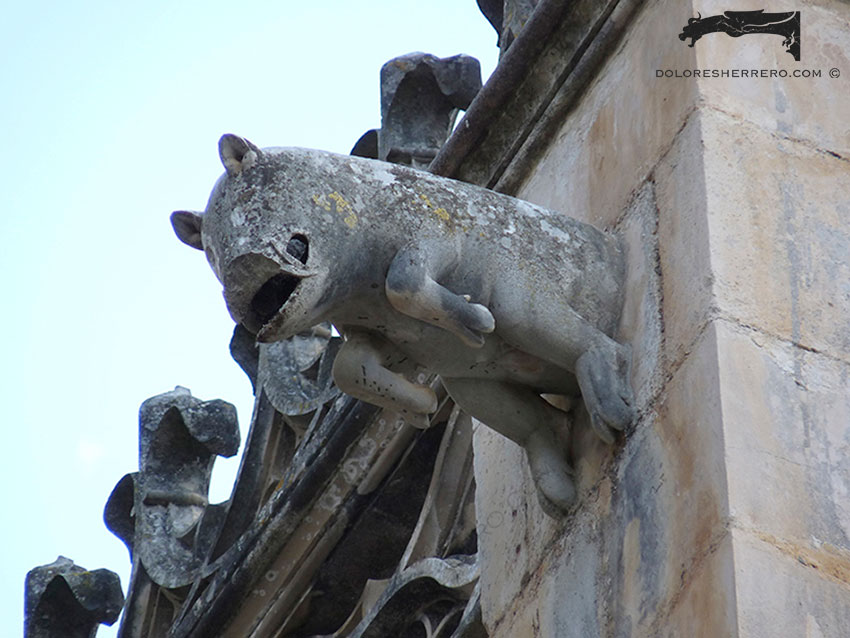
Batalha Monastery (Portugal)
Horse
Although the horse isn’t commonly seen in gargoyle images (but there is a very expressive 20th century gargoyle on Washington National Cathedral), it does appear in other kinds of depictions, such as the Oxford Bestiary (1180-1220) and the Roman de Fauvel (13th century). In ancient mythology, the horse was the emblem of the sun. In terms of its negative symbolism, in the Renaissance it was used as a symbol of lust. This interpretation was based on Jeremiah 5, 8: “They were well-fed, lusty stallions, each one neighing after his neighbour’s wife”.
- Burgos Cathedral (Spain)
- Burgos Cathedral (Spain)
Amphibians
Other images of unusual gargoyles include those depicting all kinds of amphibians. For example, toads, frogs and one or two that look like salamanders.
Because of its repugnant appearance, the toad has been unfairly treated by people, who forget that it’s a useful and vigilant friend for the role it plays in horticulture, eating vermin and worms. This aversion has probably influenced its symbolism. In Christian symbolism, it represents the vices of lust, greed and envy. But its main role is to represent the devil.
On a more positive note, for early Egyptian Christians, the frog symbolised human revival and resurrection. However, like the toad, it later became a symbol of Satan – “three unclean spirits that looked like frogs” (Revelations 16, 13) – and of lust. This rejection didn’t only feature in the Bible, as Pseudo St. Melito (8th century) in his work The Key says: “The frog is the devil”. There are other depictions of frogs in the 14th century Bestiary of El Escorial and in a gargoyle on Washington Cathedral.
As for the salamander, we can say in its favour that it symbolises justice. The Physiologus, a bestiary dating from between the 2nd and 5th centuries, tells us that if a salamander got into a burning hearth or a furnace, the fire would instantly be extinguished, such is its nature. This puts even greater emphasis on the idea that those who live according to justice will extinguish the power of fire. It’s also included in the Oxford Bestiary.
- Oviedo Cathedral (Spain)
- Guarda Cathedral (Portugal)
- Aachen Cathedral (Germany)
- Ciudad Rodrigo Cathedral (Spain)
- Ciudad Rodrigo Cathedral (Spain)
- Brussels City Hall (Belgium)
Bat
The bat is an animal linked to devilish symbolism. Origen (2nd to 3rd centuries) symbolised the bat as the emblem of heretics. In Poitou there’s a legend that tells of Satan in the guise of a bat descending in the midst of an impious dance, in which the dancers fall mortally wounded one after the other when its wings simply brush against them. The bat is also shown in manuscripts (Bestiary of El Escorial, Oxford Bestiary) as well as in choir stalls like the 13th century ones in Poitiers Cathedral.
- León Cathedral (Spain)
- Church of Nossa Senhora do Pópulo, Coto e São Gregório in Caldas da Rainha (Portugal)
Birds
In terms of birds, gargoyle images can include parrots or parakeets and owls.
Both the parrot and the parakeet are under the control of Mercury, the planet of messengers, intellectuals and writers. In Emblemas morales (Moral Emblems) by Covarrubias (1610), the parakeet symbolises the chatterbox. On the parrot, Aristotle (4th century BC) has this to say: “For such too, is the Indian bird, the parrot, that is said to be human-tongued, and it becomes even more outrageous after drinking wine”. Other authors have also referred to this animal, such as Saint Isidore (6th-7th centuries), Pliny the Elder (1st century) and Aelianus (2nd-3rd centuries). The Tuscan Bestiary (13th century) regards it as a symbol of Christ.
The owl is also said to be an attribute of Christ, who sacrificed himself to save humanity, and this explains why this animal is often present in crucifixion scenes. In terms of its negative aspect, the owl, an animal that hides in darkness and fears the light, symbolises Satan. Just like the devil tricks humanity, it’s said that the owl tricks other birds, making them fall into the traps set by hunters. The owl also symbolises solitude, which is why you often see it in scenes featuring hermits at prayer. Its oldest gift is that of wisdom, and this is why it’s frequently depicted in portrayals of Saint Jerome. The owl also appears in other kinds of art, including manuscripts (13th century Bestiary).
- Palace of the Province in Bruges (Belgium)
- Bayonne Cathedral (France)
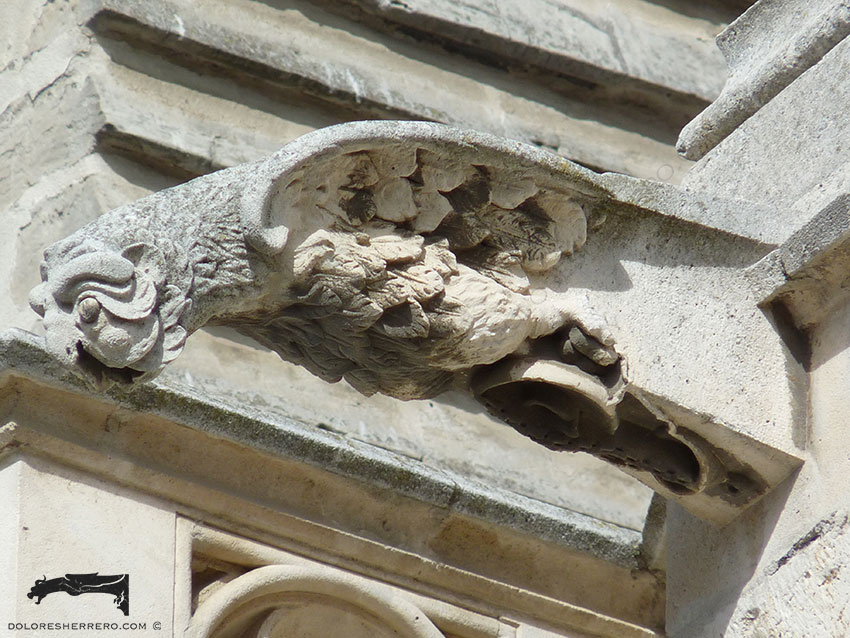
The Animal Kingdom in Art: Between Allegory and Natural Fascination
The huge variety of animal behaviour provides a wealth of values that make the animal world an inexhaustible supply of symbols and meanings. Its faculties and powers have always attracted people, faculties that humans have even envied and tried to imitate. Throughout history, depictions of real animals in all the arts have referred to these powers, serving as we know in many cases to symbolise human virtues and faults. However, Émile Mâle (1862-1954) says that in medieval time animals were portrayed in art because they were loved, rather than for allegorical reasons. This art was natural, not symbolic, and in most cases it had a purely decorative purpose.
Bibliography
CHARBONNEAU-LASSAY, L., El bestiario de Cristo. El simbolismo animal en la Antigüedad y la Edad Media, vols. I y II, Palma de Mallorca, José J. de Olañeta, Editor, 1997.
DEBIDOUR, V. H., Le bestiaire sculpté du Moyen Âge en France, France, B. Arthaud, 1961.
El Fisiólogo. Bestiario Medieval, trad.: M. Ayerra Redín y N. Guglielmi, introducción y notas de N. Guglielmi, texto utilizado: Physiologus latinus. Versio Y, editado por F. J. Carmody, University of California, Publications in Classical Philology, vol. 12, nº 7, pp. 95-134, University of California Press, Berkeley and Los Ángeles, 1941, Buenos Aires, Editorial Universitaria de Buenos Aires, 1971.
FERGUSON, G., Signs & symbols in Christian Art, New York, Oxford University Press, 1961.
MALAXECHEVERRÍA, I., Bestiario medieval, edición y traducción del inglés de I. Malaxecheverría, Madrid, Ediciones Siruela, S. A., 2008.
MARIÑO FERRO, X. R., El simbolismo animal. Creencias y significados en la cultura occidental, Madrid, Ediciones Encuentro, 1996.
MATEO GÓMEZ, I., Temas profanos en la escultura gótica española. Las sillerías de coro, Madrid, Consejo Superior de Investigaciones Científicas. Instituto Diego Velázquez, 1979.
PAYNE, A., Medieval Beasts, London, The British Library Board, 1990.
THORNDIKE, L., A history of magic and experimental science. During the first thirteen centuries of our era, vol. I, New York, Columbia University Press, 1923.

Doctor of Art History and researcher specializing in the study of gargoyles.
I am Dolores Herrero Ferrio, and my thesis, “An Approach to the Study of Gargoyles of Gothic Cathedrals in Castilla and León”, is dedicated to the study of these fascinating figures.
If you like gargoyles and art history, you will also enjoy my book, “The Gargoyle and Its Iconography,” a book I have written with great care for those interested in the world of gargoyles.
I have created my own Encyclopedia of Gargoyles, a Gargopedia to share with you, where you will discover all the secrets and wonders of these enigmatic sculptures.
I hope you enjoy this Gargopedia as much as I have enjoyed creating it, and remember that each gargoyle has a story to tell, and here you will discover them all.
 Gargoyles of Quito (Ecuador): Animal Sculptures in Andean Architecture
Gargoyles of Quito (Ecuador): Animal Sculptures in Andean Architecture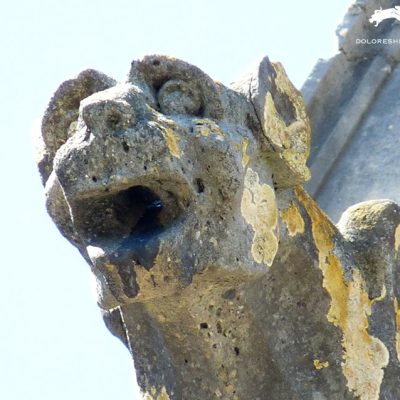 Gargoyles in Limoux (France): The Sculptural Ensemble of the Church of Saint-Martin
Gargoyles in Limoux (France): The Sculptural Ensemble of the Church of Saint-Martin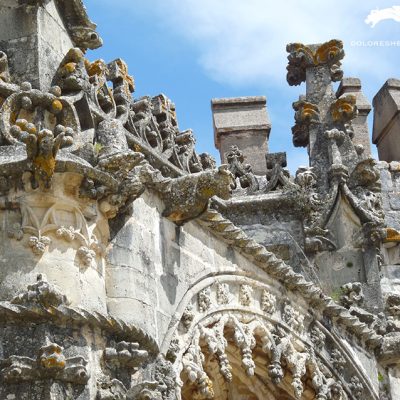 Gargoyles of Tomar in Portugal: Gothic Art and Templar Legacy
Gargoyles of Tomar in Portugal: Gothic Art and Templar Legacy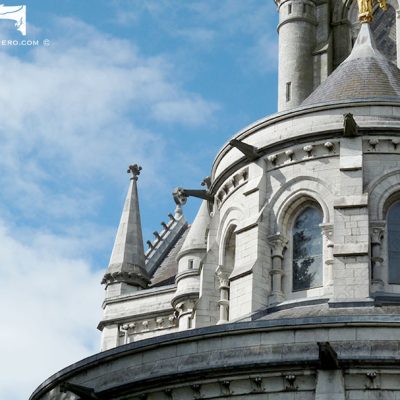 Gargoyles of Cork Cathedral: Fantastic Symbols in the Architecture of Ireland
Gargoyles of Cork Cathedral: Fantastic Symbols in the Architecture of Ireland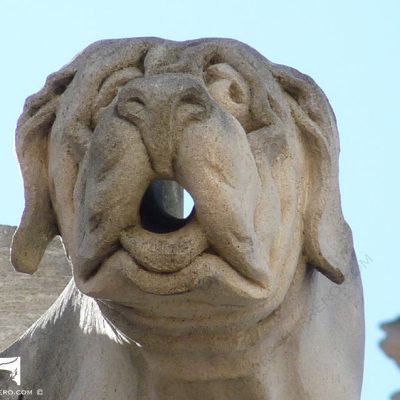 Gargoyles Shaped Like Dogs: Symbolism and Representation
Gargoyles Shaped Like Dogs: Symbolism and Representation